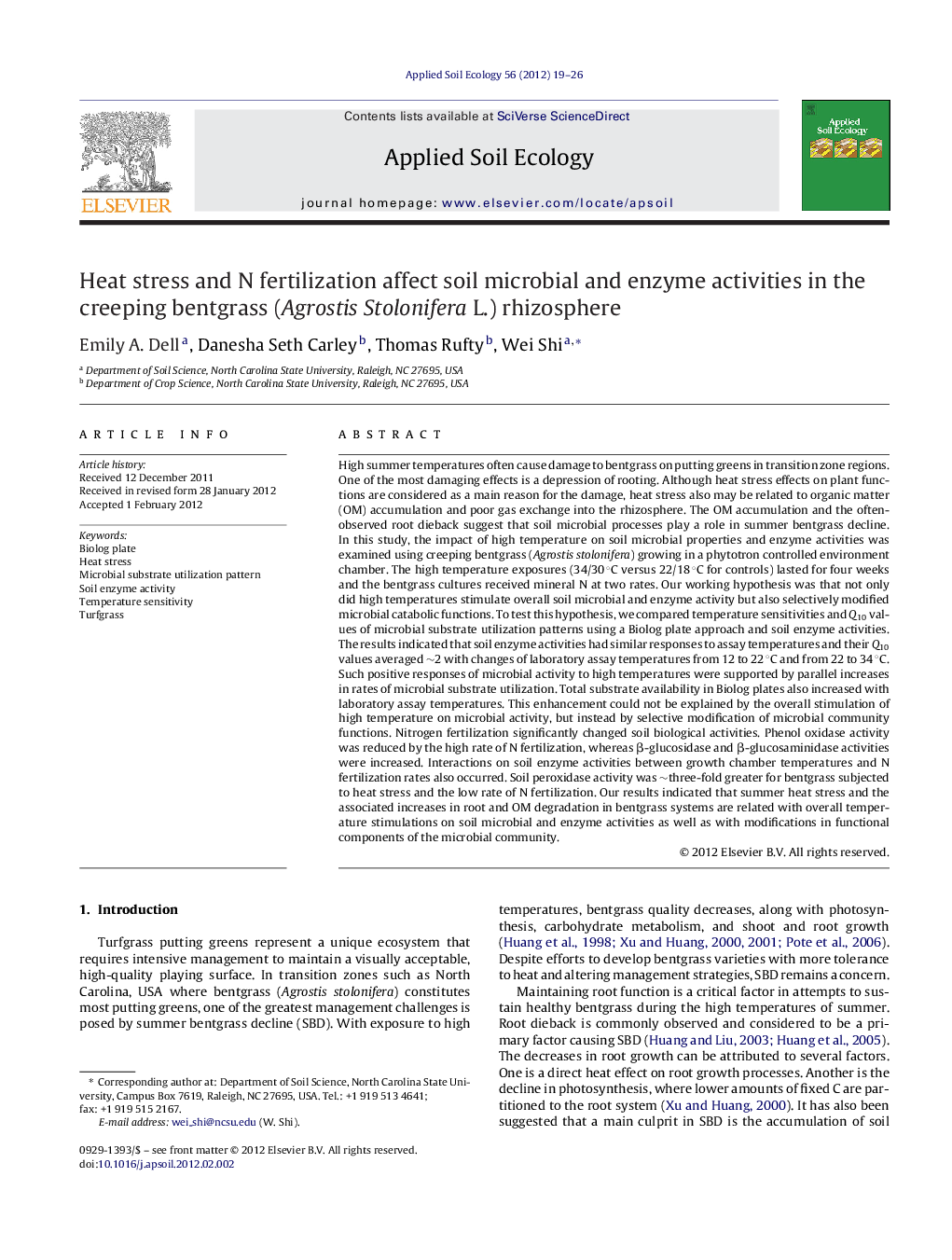| کد مقاله | کد نشریه | سال انتشار | مقاله انگلیسی | نسخه تمام متن |
|---|---|---|---|---|
| 4382571 | 1617827 | 2012 | 8 صفحه PDF | دانلود رایگان |

High summer temperatures often cause damage to bentgrass on putting greens in transition zone regions. One of the most damaging effects is a depression of rooting. Although heat stress effects on plant functions are considered as a main reason for the damage, heat stress also may be related to organic matter (OM) accumulation and poor gas exchange into the rhizosphere. The OM accumulation and the often-observed root dieback suggest that soil microbial processes play a role in summer bentgrass decline. In this study, the impact of high temperature on soil microbial properties and enzyme activities was examined using creeping bentgrass (Agrostis stolonifera) growing in a phytotron controlled environment chamber. The high temperature exposures (34/30 °C versus 22/18 °C for controls) lasted for four weeks and the bentgrass cultures received mineral N at two rates. Our working hypothesis was that not only did high temperatures stimulate overall soil microbial and enzyme activity but also selectively modified microbial catabolic functions. To test this hypothesis, we compared temperature sensitivities and Q10 values of microbial substrate utilization patterns using a Biolog plate approach and soil enzyme activities. The results indicated that soil enzyme activities had similar responses to assay temperatures and their Q10 values averaged ∼2 with changes of laboratory assay temperatures from 12 to 22 °C and from 22 to 34 °C. Such positive responses of microbial activity to high temperatures were supported by parallel increases in rates of microbial substrate utilization. Total substrate availability in Biolog plates also increased with laboratory assay temperatures. This enhancement could not be explained by the overall stimulation of high temperature on microbial activity, but instead by selective modification of microbial community functions. Nitrogen fertilization significantly changed soil biological activities. Phenol oxidase activity was reduced by the high rate of N fertilization, whereas β-glucosidase and β-glucosaminidase activities were increased. Interactions on soil enzyme activities between growth chamber temperatures and N fertilization rates also occurred. Soil peroxidase activity was ∼three-fold greater for bentgrass subjected to heat stress and the low rate of N fertilization. Our results indicated that summer heat stress and the associated increases in root and OM degradation in bentgrass systems are related with overall temperature stimulations on soil microbial and enzyme activities as well as with modifications in functional components of the microbial community.
► High temperatures enhanced not only the degradation rate but also the biodegradability of substrates in Biolog plates.
► Improved substrate biodegradability indicated selective modification on microbial catabolic functions by high temperatures.
► High temperatures could stimulate soil peroxidase activity in bentgrass systems receiving low rates of N fertilization.
Journal: Applied Soil Ecology - Volume 56, May 2012, Pages 19–26